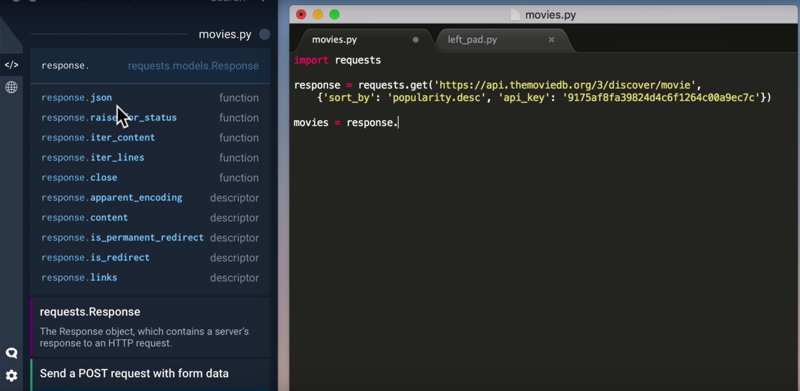| Kite - Smart Copilot For Programmers |
| Written by Nikos Vaggalis |
| Tuesday, 25 April 2017 |
|
The best products and ideas always spring out of identifying and addressing a general and widespread need. In the case of programming it's the time required when coding for searching the Internet for relevant documentation and code samples. Kite was invented to address those needs and looks set to become very popular among the programmer tribe; well the Python ones at the moment but Kite's engineers are looking into adding support for languages like C#, Java and Javascript to widen their audience. So how does actually Kite help a programmer in becoming more productive? Kite sits next to your favourite code editor, Atom, Sublime Text 3, IntelliJ and PyCharm are currently supported, monitoring what you actually type in order to display highly relevant information. For example typing 'import' and the first letters of a Python's package, will start displaying all packages starting out with those letters, their number reducing as you keep on typing, along with the signatures of the package's included methods, documentation and code samples for using them. Antonio Bustamante, engineer at Kite uses this metaphor to explain the concept:
Kite is pretty intelligent in that it is able to spot spelling mistakes and syntax errors and offers to fix them for you. What's even more interesting is its context sensitive awareness as it can predict what you are planning to do and provides hints on what to use according to the underlying pattern. For example, let's say that we make a request to a URL which brings back a JSON object: Kite will expect that typically you are going to continue with parsing that response, so it offers a a
For all this to work however, you need to be connected to the Internet while coding, since Kite works by indexing your code on its cloud, something that brings up issues with privacy. Its privacy policy has this covered however: Your Code. Private to you. Your Code. Your Control. Directory whitelisting tells Kite which directories to index. Kite will never send anything else to the backend, and only reads *.py files in these whitelisted directories. .kiteignore files are like .gitignore. They're handy for telling Kite to ignore certain files or subdirectories. Kite comes in three editions, Basic, Pro and Enterprise. Basic comes with in-editor completions, in-editor documentation and web-based references, while Pro comes with the addition of code usages and popular patterns completion, just like in the aforementioned parsing JSON example. Kite Enterprise allows for running a full Kite server instance on your organization’s local network, with all the code analysis data stored on machines you control and integrated with your organization’s access control infrastructure (such as LDAP or SAML). The plans for the future include shipping a version for Linux along with the available MacOS and Windows versions; support for more editors like Android Studio,Visual Studio and XCode; and, as already said, more languages. The most amazing thing with Kite is that powers up your humble text editor like Sublime or even Vi(!) with features that they haven't been designed for, and that's one reason I'm eager to check it against rich capability editors such as Android or Visual Studio, when the corresponding versions are ready that is. Here is Adam Smith, founder of Kite demonstrating Kite in action:
For the time being, the lucky Pythonistas are they only ones who can get a head start.
More InformationRelated ArticlesBlisk - The Developers Browser
To be informed about new articles on I Programmer, sign up for our weekly newsletter, subscribe to the RSS feed and follow us on Twitter, Facebook or Linkedin.
Comments
or email your comment to: comments@i-programmer.info |
| Last Updated ( Tuesday, 25 April 2017 ) |



